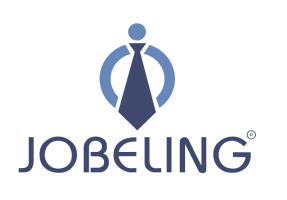
A dancer’s work environment is dynamic, diverse, and often challenging. From rigorous rehearsals to live performances and collaborative creative spaces, dancers navigate a range of settings that demand discipline, adaptability, and resilience. This guide explores the work environment of a dancer, delving into the various physical, emotional, and professional aspects of their career.
Contents
- 1 Exploring the Work Environment of a Dancer
- 2 Physical Spaces in the Work Environment of a Dancer
- 3 Emotional Aspects of the Work Environment of a Dancer
- 4 Collaborative Dynamics in the Work Environment of a Dancer
- 5 Emerging Trends in the Work Environment of a Dancer
- 6 Adapting to the Work Environment of a Dancer
- 7 Balancing Physical and Mental Health in the Work Environment of a Dancer
- 8 Navigating Career Transitions in the Work Environment of a Dancer
- 9 FAQs
- 9.1 What are the key aspects of the work environment of a dancer?
- 9.2 How do dancers manage the pressure of performing?
- 9.3 What role does collaboration play in a dancer’s work environment?
- 9.4 How is the digital space influencing the work environment of a dancer?
- 9.5 How can dancers maintain wellness in their work environment?
- 10 Conclusion
Exploring the Work Environment of a Dancer
The work environment of a dancer is influenced by their chosen career path, whether they perform in professional companies, teach at studios, or work in commercial settings. Understanding these environments is essential for aspiring dancers and professionals alike.
What Defines the Work Environment of a Dancer?
The work environment of a dancer encompasses the spaces where they rehearse, perform, and interact with colleagues. This can range from state-of-the-art studios and theaters to unconventional locations like outdoor stages or digital platforms. A dancer’s work environment is often fast-paced, requiring physical and mental endurance to meet the demands of rehearsals, performances, and travel. For professional dancers, the environment also includes collaboration with choreographers, directors, and other performers, fostering creativity and teamwork.
Why the Work Environment Matters for Dancers
The work environment of a dancer significantly impacts their performance, well-being, and career growth. A supportive environment with adequate facilities, clear communication, and mutual respect can enhance creativity and productivity. Conversely, a challenging or stressful work setting may affect motivation and physical health. Dancers who understand their work environment are better equipped to adapt to its demands, whether they are part of a touring company, teaching in a local studio, or freelancing in commercial projects.
Physical Spaces in the Work Environment of a Dancer
The physical spaces where dancers work are critical to their craft, providing the tools and atmosphere necessary for training, rehearsals, and performances.
Dance Studios
Dance studios are the cornerstone of a dancer’s work environment, offering the space to practice and refine techniques. Studios are typically equipped with sprung floors to reduce impact on joints, mirrored walls for self-assessment, and sound systems for musical accompaniment. A well-maintained studio fosters focus and discipline, enabling dancers to push their limits while minimizing the risk of injury. Beyond the physical aspects, studios often serve as collaborative spaces where dancers connect with peers and choreographers to bring creative visions to life.
Performance Venues
Performance venues are another vital aspect of the work environment of a dancer. These spaces range from grand theaters with professional lighting and stage design to more intimate settings like community centers or outdoor stages. Each venue presents unique challenges, such as adapting to different stage dimensions, acoustics, and audience dynamics. Dancers must be flexible and prepared to deliver exceptional performances regardless of the setting, making these venues an essential part of their professional landscape.
Emotional Aspects of the Work Environment of a Dancer
The emotional aspects of a dancer’s work environment can be both inspiring and demanding, shaping their mindset and resilience.

The Pressure of Performance
Performing in front of live audiences can be exhilarating yet nerve-wracking. The work environment of a dancer often includes the pressure to meet high expectations from directors, peers, and audiences. This pressure requires mental toughness and the ability to stay calm under stress. While challenging, the thrill of connecting with an audience and bringing a choreographer’s vision to life makes the effort worthwhile.
Building Resilience in a Competitive Field
The dance industry is highly competitive, with limited opportunities and constant auditions. Dancers face rejection, rigorous schedules, and the need to maintain peak physical condition. A supportive work environment can play a crucial role in helping dancers build resilience, fostering a sense of community, and encouraging perseverance through challenges.
Collaborative Dynamics in the Work Environment of a Dancer
Collaboration is at the heart of the dance world, requiring effective communication and teamwork to create cohesive performances.
Working with Choreographers
A significant part of the work environment of a dancer involves collaborating with choreographers who shape the artistic direction of performances. Choreographers guide dancers in interpreting movements, refining techniques, and expressing emotions through motion. This dynamic relationship is built on trust and mutual respect, as both parties work toward a shared creative goal.
Interacting with Fellow Dancers
Dancers often rehearse and perform in groups, necessitating strong interpersonal skills. Whether practicing synchronized movements or navigating stage changes, effective communication and camaraderie are vital. A positive work environment fosters collaboration, ensuring that dancers can perform seamlessly as a team while supporting one another through the rigors of their profession.
Emerging Trends in the Work Environment of a Dancer
The dance industry is evolving with new trends that influence the work environment of a dancer, offering fresh opportunities and challenges.
Digital Spaces for Dance
With the rise of virtual performances and digital collaborations, the work environment of a dancer now extends into the digital realm. Platforms like TikTok, YouTube, and Zoom have become popular venues for showcasing talent and connecting with global audiences. These digital spaces allow dancers to innovate, collaborate remotely, and reach broader audiences, redefining traditional work environments.
Emphasis on Wellness and Mental Health
The importance of wellness and mental health is gaining recognition in the dance industry. Studios, companies, and organizations are incorporating wellness programs, such as yoga, meditation, and mental health support, into their environments. These initiatives create a more holistic work environment, ensuring dancers can maintain physical health while managing the emotional demands of their careers.
Adapting to the Work Environment of a Dancer
Success in the dance industry requires adaptability to its diverse and ever-changing work environments.

Managing Rigorous Schedules
Dancers often juggle rehearsals, performances, and travel, creating a demanding schedule. Effective time management and prioritization are essential to thrive in this environment. Many dancers rely on planners, apps, and support systems to stay organized and maintain balance.
Navigating Different Work Settings
From traditional studios to outdoor stages and digital platforms, dancers must adapt quickly to different settings. Understanding the nuances of each work environment—such as adjusting to new flooring, lighting, or audience dynamics—ensures that dancers can deliver consistent and high-quality performances.
Balancing Physical and Mental Health in the Work Environment of a Dancer
Maintaining physical and mental health is crucial for dancers to thrive in their demanding work environments.

Proper self-care ensures longevity in their careers and prevents burnout or injury.
Physical Health Challenges and Solutions
The physical demands of a dancer’s work environment are significant, requiring strength, flexibility, and endurance. Long hours of rehearsal and repetitive movements can lead to fatigue or overuse injuries. Dancers must adopt preventive measures such as warm-ups, proper technique, and regular conditioning exercises. Nutrition also plays a vital role in sustaining energy and supporting recovery. Consulting with physical therapists or trainers specializing in dance can help create tailored routines to address individual needs, ensuring dancers remain in peak condition.
Mental Health Strategies for Dancers
The work environment of a dancer often involves emotional highs and lows, from the joy of performing to the stress of auditions and competitions. Maintaining mental health is essential to handle these fluctuations effectively. Mindfulness practices like meditation and yoga can help dancers manage stress and build resilience. Many studios and companies now offer mental health resources, including counseling services and wellness workshops, to support their dancers. Prioritizing rest, seeking community support, and setting realistic goals can also foster a healthier mindset.
Navigating Career Transitions in the Work Environment of a Dancer
The career of a dancer evolves over time, and transitions are a natural part of the journey. Understanding how to navigate these changes can help dancers adapt to new opportunities and roles.
Transitioning Between Dance Roles
Dancers may find themselves transitioning between performance, education, or administrative roles as their careers progress. For example, a performer may become a choreographer or studio owner after retiring from the stage. These transitions often require new skills, such as leadership, business management, or curriculum development. Training programs, certifications, and mentorship opportunities can help dancers successfully navigate these shifts while staying connected to their passion for dance.
Expanding into Non-Traditional Dance Careers
The evolving landscape of the dance industry has opened up non-traditional career paths, such as working in dance technology, wellness, or arts advocacy. For instance, dancers can explore roles in motion capture for video games or become consultants for fitness brands. Expanding into these areas allows dancers to apply their expertise in innovative ways while ensuring financial stability and continued growth. Embracing such transitions requires an open mind, a willingness to learn, and the ability to adapt to new environments.
FAQs
What are the key aspects of the work environment of a dancer?
The work environment includes physical spaces like studios and performance venues, emotional challenges, and collaborative dynamics with peers and choreographers.
How do dancers manage the pressure of performing?
Dancers rely on mental resilience, preparation, and support from their work environment to handle performance pressures effectively.
What role does collaboration play in a dancer’s work environment?
Collaboration is central, as dancers often work closely with choreographers and peers to create cohesive and impactful performances.
How is the digital space influencing the work environment of a dancer?
Digital platforms have expanded opportunities for virtual performances, collaborations, and global audience engagement, redefining traditional work settings.
How can dancers maintain wellness in their work environment?
Incorporating wellness practices like yoga, meditation, and mental health support helps dancers balance the physical and emotional demands of their careers.
Conclusion
The work environment of a dancer is as diverse as the art form itself, encompassing physical spaces, emotional dynamics, and collaborative interactions. Understanding and adapting to these environments is key to a dancer’s success and longevity in the industry. If you’re ready to take your dance career to the next level, Jobeling Talent Agency is here to support you. Join our waitlist today and connect with top opportunities tailored to your skills and aspirations!
